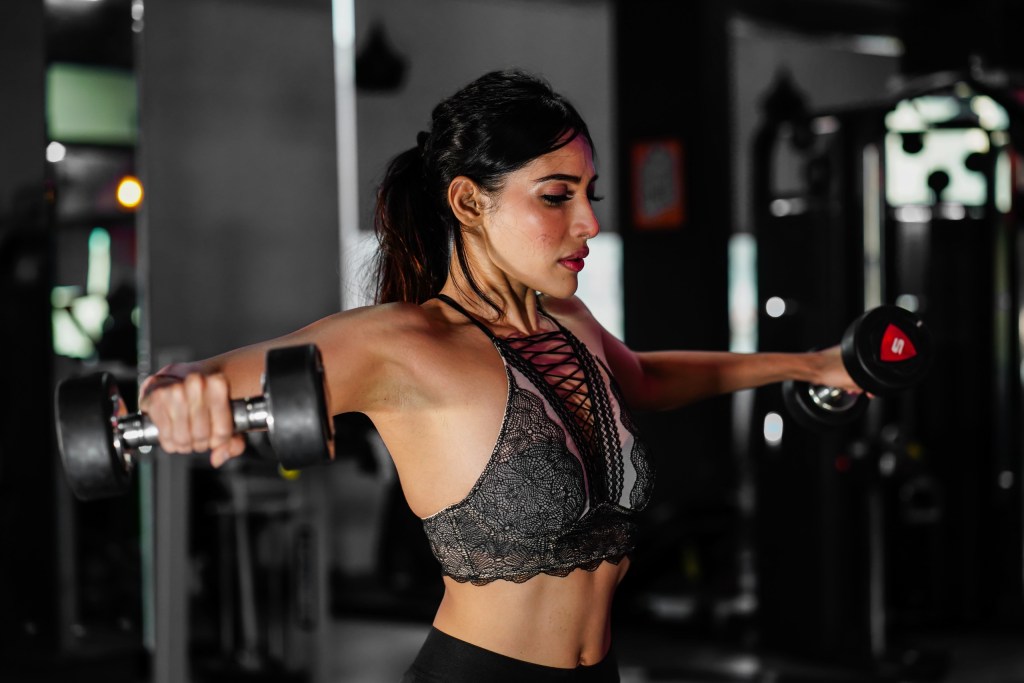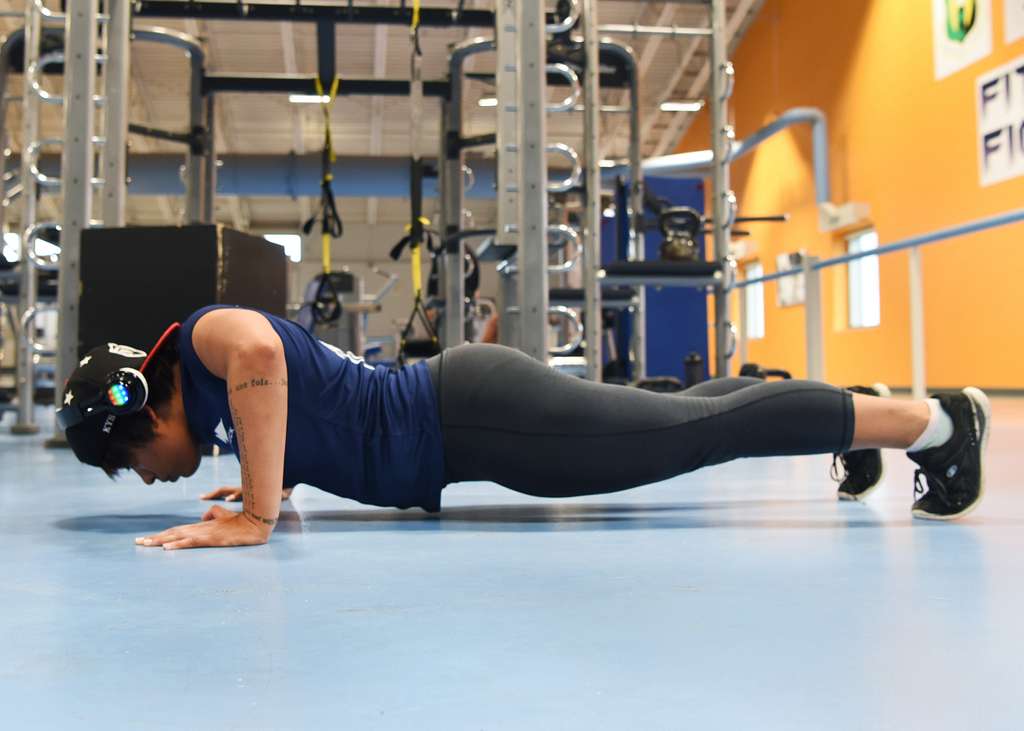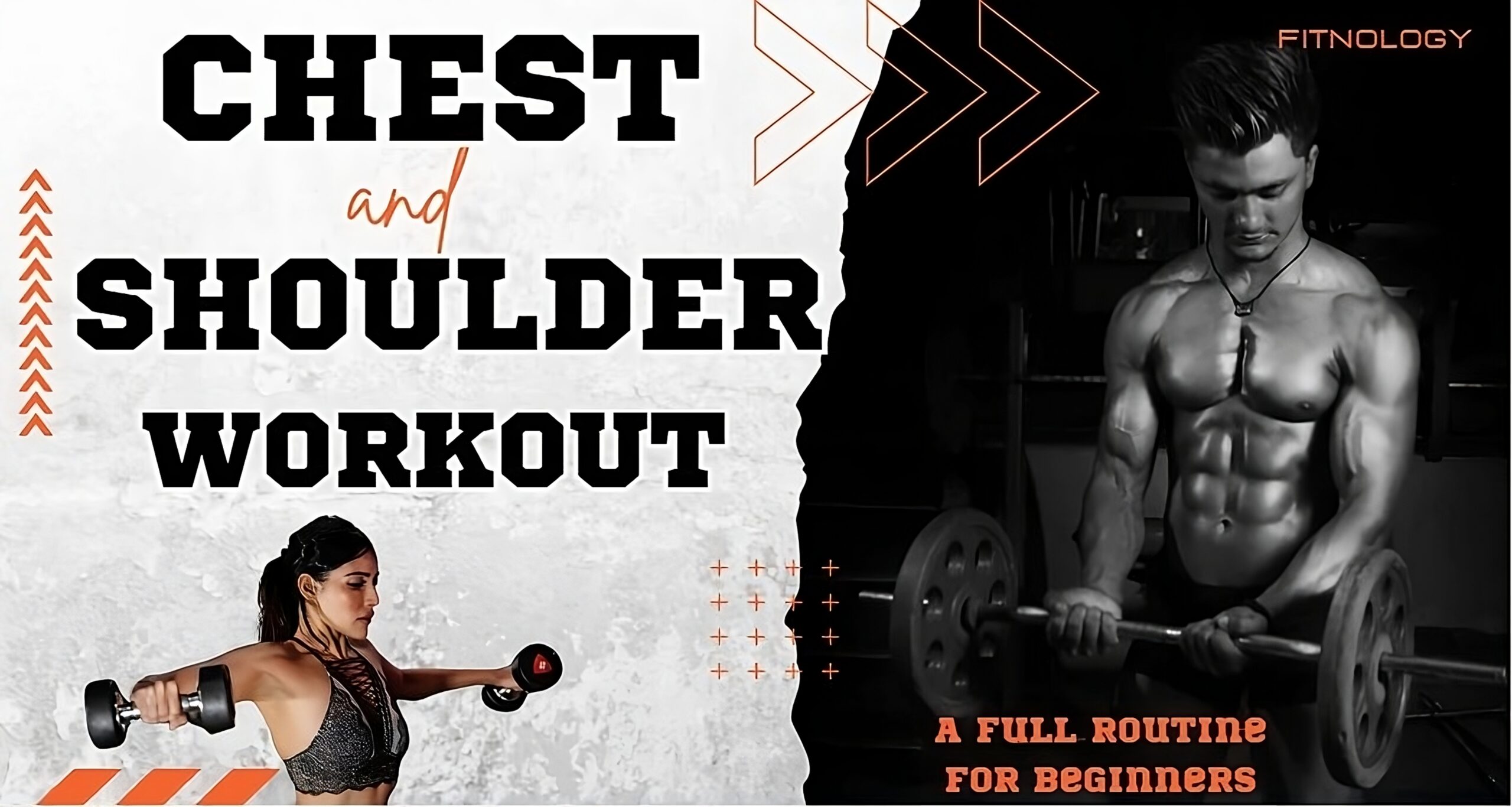Introduction
Beginning your fitness journey can be intimidating, but Chest and Shoulder Workout offer a solid starting point. Not only can these two-part muscles define your upper body but they can also improve posture, strength and fitness – this beginner-oriented guide offers you an effective routine you can easily follow! Each step will be explained while making sure that the exercise is safe and accessible for beginners.

The Importance of Chest and Shoulder Workouts
Chest and shoulders are vital to daily activities and movements. These muscles are always in use, whether it’s to open doors or lift items above the head. They improve your functional strength and reduce your risk of injury. Journal-of-Strength-and-Conditioning-Research recently conducted a study that demonstrated beginners could see gains in strength as early as six weeks after beginning an active workout regime. Start now to set yourself up for success in the long term.
My Personal Experience Starting Out
The equipment intimidated me when I first entered the gym. It was difficult for me to know how to begin or which exercises I should choose. After some time, I began to realize the importance of pushing-ups and overhead presses. It’s important to start with the basics. You’ll make progress if you stick to the basics.
Your Beginner-Friendly Chest and Shoulder Workout Routine
Here’s a simple chest and shoulders routine for beginners. The plan uses compound exercises and isolations to target the key areas effectively. This workout should be performed 2-3 times per week with at least one day of rest between each session.
Push-Ups
- The muscles targeted are the chest, shoulders, and triceps.
- What to do:
- Starting in the plank position, place your hands a little wider than shoulder width.
- Reduce your body weight until you reach the floor.
- Reverse your position to where you started.
- Reps: Three sets of 15-20 reps.
The classic push-up is a staple for good reason. It’s simple and effective. You don’t need any equipment. You can try knee push-ups if regular push-ups are too difficult.
Learn from My Mistakes
At first, I made a mistake by ignoring the form in order to do more repetitions. It was a mistake that led to discomfort in the shoulders. Focus on the quality of your work over the quantity. I can tell you that going slowly and steadily pays off over the long term.
Incline Dumbbell Press
- The muscles targeted are the upper chest and shoulders.
- What to do:
- Hold dumbbells with each hand while lying on an inclined bench.
- As you extend your arms, press the weights up.
- Reduce them in a controlled manner.
- Reps: Three sets of 8-12 repetitions.
The incline press is a great way to develop the upper part of your chest. This gives you a more balanced appearance.
The Routine That Works
The simplicity of this exercise is one reason I continue to do it. Combining compound and isolated movements allows me to work multiple muscle groups without complicating things. Simplifying your workouts will help you feel less overwhelmed.
Overhead Dumbbell Press
- The muscles targeted are the shoulders and triceps.
- What to do:
- Place a dumbbell at each shoulder level.
- As you extend your arms, press the weights up.
- Slowly lower them down.
- Reps: Three sets of 8-12 repetitions.
The movement will help you build shoulder stability and strength. Begin with lighter weights until you master the form.
What Keeps Me Motivated
There are some days that I would rather not exercise. The small gains I see week after week are what keep me motivated. These little victories, whether it is lifting heavier weights than usual or doing an additional push-up, are what keep me motivated. Once you get started, you’ll experience the same feeling.
Lateral Raises
- The muscles targeted are the side deltoids of the shoulder.
- What to do:
- Keep a dumbbell between your hands.
- Raising your arms to shoulder height, raise them outwards.
- Reduce them in a controlled way.
- Reps: Three sets of 12-15 repetitions.
The shoulders will look rounded and defined with lateral raises. Lifting heavy weights is not the best way to tone your shoulders. Focus instead on movements that are controlled.
The Role of Nutrition
Exercise alone doesn’t work. I learned this the hard way.An adequate protein diet is key to both muscle recovery and expansion. According to a study published in the American-Journal-of-Clinical-Nutrition, Consume between 1.2 to 2.0 gms of protein daily per kilogram for optimal results.
Chest Flies (Using Dumbbells and Resistance Bands).
- The muscles targeted are the chest.
- What to do:
- Lay on the floor or a bench with dumbbells in both hands.
- You can also lower your arms in an arc to your sides.
- Could you return them to their starting positions?
- Three sets of 10-12 repetitions.
The chest is worked with this exercise. It adds variety and isolates your chest muscles. If you do not have dumbbells, resistance bands are a good alternative.
Staying accountable
Tracking my progress helps me stay accountable. In a notebook, I record the weights that I lift and how many reps I do. I find it motivating to watch those numbers increase over time. Try it out.

Shoulder Tap Plank
- The muscles targeted are the shoulders, chest, and core.
- What to do:
- Starting in the plank position.
- Then, tap your right shoulder using your left hand.
- Maintain your hips in a straight line throughout all movements.
- Three sets of twenty taps (ten on each side).
The core is also engaged in this functional exercise to add stability.
Last Thoughts about Progress
When I look back at my past, it’s clear that big steps aren’t the only way to progress. Consistent, small efforts can add up. Celebrate your wins, whether it is completing extra reps or improving on form. Fitness is as much of a mental as it is a physical journey.
Success Tips
- Warm-up: Do light cardio exercises and dynamic stretching for 5-10 minutes.
- Rest between Sets: Between sets, take 60-90 seconds to rest.
- To achieve optimal results, aim for at least 2-3 sessions each week.
- As you gain strength, increase your weight and reps.
- Listen to your body: Stop and take a moment to assess how you are moving, or stop for a short break if something is not right.
Why Should You Focus On Your Chest And Shoulders?
Chest and shoulders form the foundation for strength and beauty in the upper body. They are essential for daily activities such as lifting and pushing. They improve posture, increase functional strength, and provide a solid base for all other exercises. Building these muscles is a great way to set the stage for future progress and decrease the chance of injury.
Starters should avoid these common mistakes.
A new exercise routine requires a certain amount of learning. To maximize your results, avoid these common mistakes:
- Do not skip warm-ups. Always stretch your muscles or do light cardio to prepare them.
- Before increasing weights, focus on form.
- Avoid neglecting opposing muscles: Work the arms and back to prevent injury and maintain balance.
- Neglecting Recovery Days: It is essential to rest days for muscle growth and repair.
The Science Behind Chest and Shoulder Training
Compound exercises such as push-ups or dumbbell presses engage multiple muscles, increasing the calorie expenditure and recruitment of muscle. Journal-of-Strength-and-Conditioning research highlights the importance of gradual overloading for beginners. You can encourage muscle development without overloading your muscles by gradually increasing the resistance.
Exercise program that covers all parts of the chest–upper, middle and lower–along with shoulders anteriorly, laterally and posteriorly is essential in creating balance while decreasing injury risks.
Recommended Equipment for Beginners
To get started, you don’t require a fully equipped gym. You can make progress with a few simple items:
- The adjustable dumbbells offer a versatile, space-saving option.
- The resistance bands are great for beginner athletes, as they provide a variety of levels.
- Incline Bench: Helps diversify chest exercises.
- The mat provides comfort for floor-based yoga movements.
Food for strength gains
Strengthening your body is not just about working out; diet plays an important role. Concentrate on the following principles:
- Consume 1.6 to 2.2 grams of proteins per kilogram of body weight each day.
- Keep hydrated for muscle health.
- Balanced diet: Include healthy fats and carbohydrates as well as micronutrients to boost energy and recovery.
Importance of Proper Form and Technique
- What is the significance of HTML0? for beginners: making sure you are in good form is essential in order to prevent injury and increase the efficacy of workouts. Poor form could lead to injuries to muscles or joint issues, particularly those that target big muscle groups such as shoulders and the chest.
- Tips to maintain the best form :
- Make sure you have a balanced spine in order to avoid strain on your lower back.
- Make sure you focus on slow and controlled moves rather than speeding through exercises.
- Make sure your shoulders are relaxed as well as your chest straight (not round) in order to effectively engage your muscles.
- Visual signals Illustrations or videos that demonstrate the correct form vs. the wrong format.
- Tips to maintain the best form :
Chest and Shoulder Exercises for Beginners
- Essential exercises for your chest :
- Push-ups Bodyweight push-ups for beginners: An exercise that stimulates chest, shoulders and the triceps. Begin with knee push-ups, in case standard push-ups are too hard for you.
- Dumbbell Chest Press With light weights this workout mimics the pushing-up movement while also making it possible to concentrate on the chest area with greater focus.
- Chest Fly When performed while sitting on a bench which isolates chest muscles, stretching them and contracting them.
- Important exercises for shoulders :
- Overhead Dumbbell Press The shoulder muscles are targeted and assists in increasing muscles for the middle and front deltoids.
- Lateral Raise Concentrates on the middle of the shoulder. This helps to increase the overall width of the shoulder.
- Front Raising targets the front deltoids, while balancing the shoulder’s growth.
- What are these exercises?: They are fundamental movements, which target shoulders and chest muscles. They provide an appropriate approach for those who are new to.
Creating a Beginner-Friendly Routine
- Sample Beginner Routine A balanced shoulders and chest routine must comprise a blend of isolation and compound exercises.
- Example:
- Three sets of 8-12 reps of knee push-ups, or push-ups
- Sets of 3-8-12 reps Dumbbell Chest Press
- Three sets of 10-15 repetitions of Dumbbell Lateral Raises
- Three sets of between 8-12 repetitions Overhead Dumbbell Press
- Recuperation and Rest The goal for beginners is to strive for a period of rest that is 60 to 90 seconds between sets. It is important for the muscles to heal, particularly during the initial stages of exercise.
- The frequency for beginners the best advice is to perform this exercise 3 times per week with a rest day to keep from excessive training.
- Example:
- Each one of these subjects will help you structure your beginner’s workout with a secure, efficient manner, encouraging muscle development and preventing injury.

Conclusion
It’s not difficult to build strength in the chest and shoulders. This easy-to-follow routine will help you build muscle and increase stability and confidence as you embark on your fitness journey. Consistency and correct form are the keys. Use what you’ve got and continue to push forward. This is your time!
FAQs
1. Beginners should train their chest and shoulders at least once a week?
Beginners can train their chests and shoulders at least twice a week.
2. Am I a beginner, and do I have to lift heavy weights in order to gain muscle?
Start with light weights and focus on form. Gradually increase the resistance when you get stronger.
3. Do I have to do both chest and shoulder exercises at the same time?
Combining chest and shoulder exercises is common, and it’s effective. This applies to beginners in particular.
4. How long is a good chest and shoulders workout?
Beginner workouts can last between 30-45 minutes depending on how many sets you do and the rest period.
5. Can push-ups be enough to build chest muscles?
Beginners can benefit from push-ups, but they will also enjoy adding dumbbell presses or chest flies to their routine.
6. Shoulder pain while working out?
Check your form immediately after stopping the exercise. Consult a healthcare professional or trainer if the pain continues.
7. How can I exercise my chest and shoulder muscles at home?
You can do bodyweight exercises at home, such as push-ups or resistance bands.
8. How quickly should I expect the results from this regimen to show up?
With proper training and nutrition, most beginners will notice a noticeable increase in strength within 4 to 6 weeks.
9. Warm up or start the workout first.
Absolutely. Warming up with light stretching or cardio for 5-10 minutes will reduce injury and prepare your muscles.
10. How should I work the other muscles in addition to the chest and shoulder muscles?
Exercises for the back, arms, and core will help to prevent imbalances and ensure balanced muscle development.

